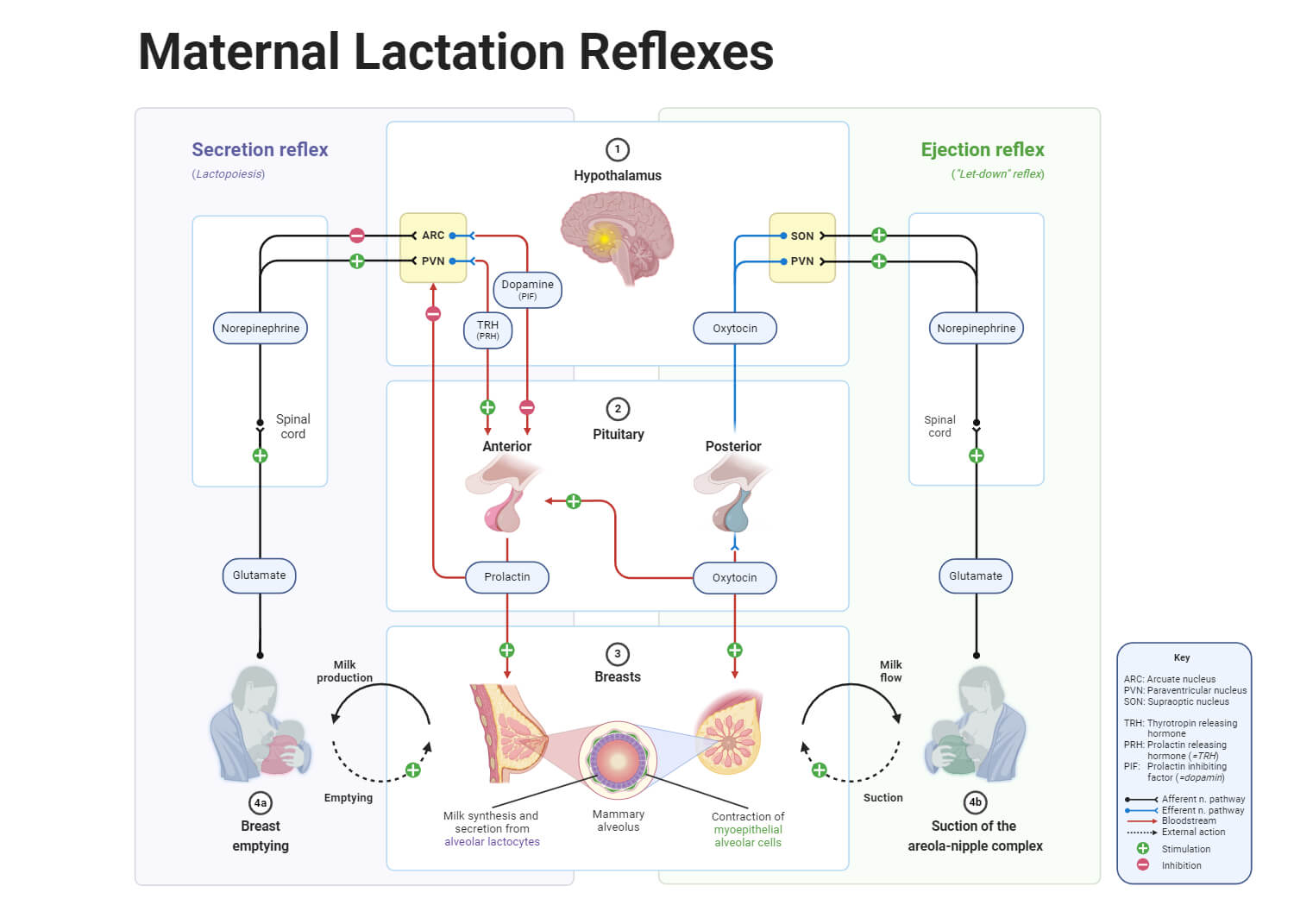Interesting Science Videos
What is a Reflex?
A reflex is a fast, predictable, automatic (involuntary) response triggered by specific stimuli (environmental change).
It is a quick, automatic reaction to something that happens and does not require conscious thought.
- It plays a crucial role in quickly reacting to potentially dangerous stimuli and maintaining homeostasis in the body.
- It serves the function of maintaining the body’s homeostasis and preserving the individual’s physical integrity.
- They play a crucial role in various involuntary responses, such as regulating internal organ functions in response to environmental changes, increasing blood flow during exercise, and triggering protective actions like coughing and sneezing.
- These automatic and unconscious responses are essential for survival and are primarily developed at birth, contributing to the body’s ability to quickly react to potential dangers and uphold internal balance.
Reflexes have five essential components involved in the physiological response. They are:
a) Receptors: They are responsible for detect environmental changes and convert the energy into an action potential. Receptors vary widely in the body, but they all share the everyday function of translating ecological energy into a stimulus form. For example, retinal receptors detect light, while muscle spindle receptors detect stretch. There are several types of receptors, each with different capacities for stimulus transduction.
b) Sensory neurons: Sensory neurons transmit the sensory information from the receptor to the central nervous system.
c) Interneurons: These neurons process the information within the central nervous system, making necessary adjustments.
d) Motor neurons: These neurons transmit the information from the central nervous system to the effector.
e) Target organs: These are the effectors that produce the physical response, such as muscle contraction or gland secretion.
- These components work together to create a rapid and automatic response to environmental stimuli, ensuring the body’s ability to react quickly and maintain homeostasis.
- Reflexes follow a neural pathway called reflex arcs which, regulates impulse response, a spontaneous and nearly instantaneous reaction to input.
Reflex Arc
The reflex arc is a pathway that governs the operation of reflexes. It is composed of nerve pathways that travel through the nervous system.
- It consists of several components: a receptor, sensory neuron, interneuron, motor neuron, and effector.
- These components quickly transmit and process sensory information, leading to a rapid motor response.
- There are two main types of reflex arcs: the autonomic reflex arc, which affects internal organs, and the somatic reflex arc, which affects muscles and conscious activities.
- The reflex arc is a fundamental part of the physiology of posture and locomotion, as well as for the clinical examination of the nervous system.

Components of Reflex Arc
1. Receptor
- It is responsible for detecting a stimulus, situated at the end of a dendrite or within a specialized sensory cell.
- Its primary role is to be sensitive to specific internal or external changes, allowing it to identify and respond to particular types of stimuli.
2. Sensory neuron
- It carries the sensory information to the brain or spinal cord.
- It comprises a dendrite, cell body, and axon as structural components.
- Its primary function is to transmit nerve impulses from the receptor towards the brain or spinal cord.
3. Interneuron
- It is also known as relay neurons and operates within the brain or spinal cord.
- Structurally, it consists of a dendrites, a cell body, and an axon.
- Its primary function revolves around acting as a processing center within the nervous system, facilitating the conduction of nerve impulses from sensory neurons to motor neurons.
- This neuron plays a vital role in processing and transmitting information between sensory and motor neurons that helps in the coordination of responses to stimuli.
4. Motor neuron
- It carries motor output to the periphery, encompassing dendrites, cell body, and axon within its structure.
- Its primary function involves transmitting nerve impulses from the brain or spinal cord out to effectors.
- Effectors are muscles, glands, or other body parts that respond to these impulses, enabling the excretion of specific actions or responses initiated by the nervous system.
5. Effecter
- The effector is either a muscle or a gland within the body.
- Its primary function is to respond to the stimulation delivered by the motor neuron.
- When triggered, the effector generates the reflex or behavioral action that corresponding to the nerve impulse received, translating the neural signal into a physical response or action within the body.

Functions of Reflex Arc
- Faster response: It enables a quicker response to protect the body from potential threats.
- Homeostasis: It helps maintain homeostasis.
- Decreased burden on the brain: It reduces the burden on the brain, which is already involved in coordinating various activities through different neural networks.
- Automatic response: It allows for prompt, short-lived, and automated responses involving only a part of the body.
- Involuntary movement: It is an automatic and nearly instantaneous movement in response to a stimulus and does not require any thought input.
References
- De Castro, M. V., Silva, M. V. R., Chiarotto, G. B., Volpe, B. B., Santana, M. H. A., Luzo, Â. C. M., & De Oliveira, A. L. R. (2019). Reflex arc recovery after spinal cord dorsal root repair with platelet rich plasma (PRP). Brain Research Bulletin, 152, 212–224. https://doi.org/10.1016/j.brainresbull.2019.07.024
- https://onlinelibrary.wiley.com/doi/pdfdirect/10.1111/sms.12600
- https://mymission.lamission.edu/userdata/ebnesha/docs/Chap%206%20Reflexes.pdf
- https://ksumsc.com/download_center/Archive/2nd/437/1.%20Neuropsychiatry%20Block/Male%20Group/Physiology/2-SpinalCord%26Reflexes.pdf
- https://www.palmbeachstate.edu/slc/Documents/AandPch12LecturePearson.pdf
- The Editors of Encyclopaedia Britannica. (2019, November 4). Reflex arc | Description & Components. Retrieved from https://www.britannica.com/science/reflex-arc
- StudyMoose. (2023, April 29). The Mechanism of Rapid Response: Understanding the Reflex Arc Free Essay example. Retrieved from https://studymoose.com/the-reflex-arc-essay

Good